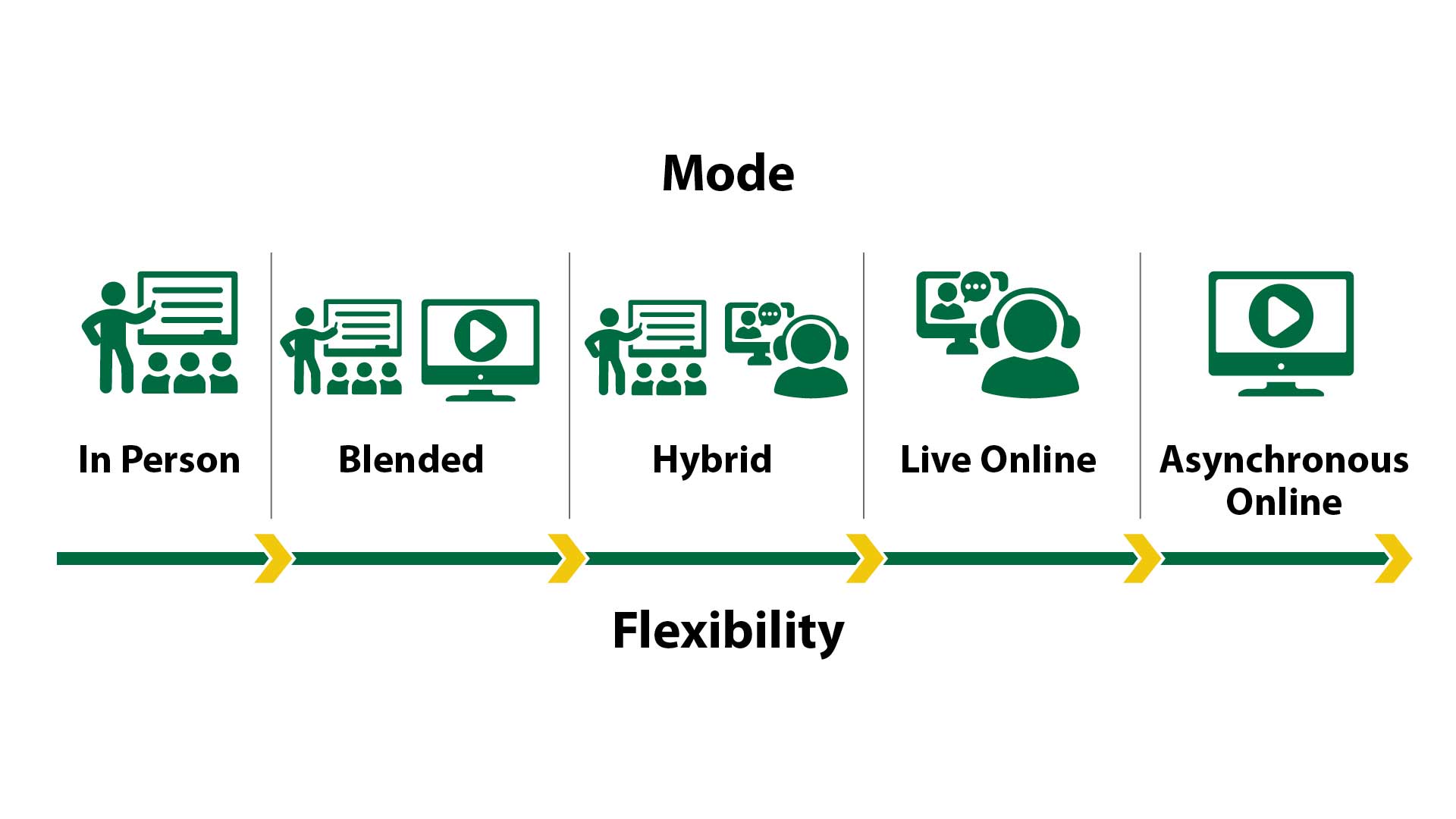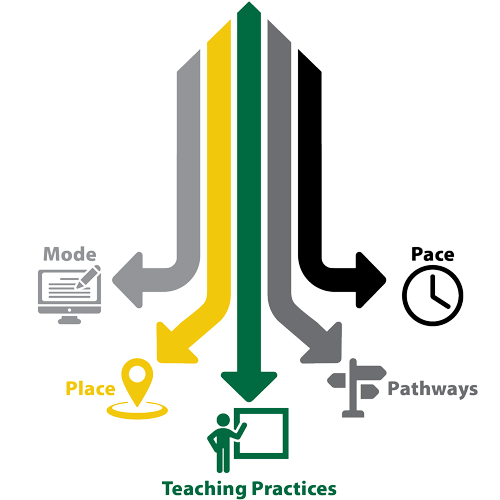Flexible learning aims to provide students with choices in how, where, and when they engage in learning enabling more personalized pathways into and through a program.
Learn more about USask’s flexible course and program offerings.
What do we mean by flexible learning?
Flexible learning accommodates learners’ varied needs and preferences by providing multiple educational delivery options. Traditional models in higher education often expect students to adhere to a pre-determined timeframe for program completion, attend educational experiences at a specific location, and engage in their learning through either in-person or asynchronous online learning modes.
In a flexible learning environment, elements such as the duration of study, location, and instructional method are transformed into choices for the students.
Did you know...
17.5% of USask classes are offered in a flexible mode (e.g., online, hybrid)?
For example, classes can vary by their mode of delivery. Classes can be offered in person, ‘live’ online (synchronous) where students and instructors meet online at the same time, or asynchronous online where instructors and students engage online on their own time. These can be combined to create blended modes (some online asynchronous learning replaces in person learning) and hybrid modes (a 100% in person cohort is taught together with a 100% online synchronous cohort). These varied modes can be mapped on a continuum from least to most flexible.


A flexible learning environment can empower students to decide their:
- Mode of study (e.g., in-person, hybrid, blended or online, asynchronous, or synchronous)
- Place of study (e.g., Saskatoon, Prince Albert, regional college locations),
- Pathway through an academic program (e.g., micro-credentials, preparation courses such as USTEP, EAP, and open learning admission),
- Pace of study in their program (e.g., by adjusting how many courses each term, students can adjust the overall length to complete their degree).
- In addition, educators can choose from a variety of flexible teaching practices to better support students (e.g., adapting their teaching approaches to a new generation of students to reduce need to accommodate and to help grow student agency and identity, using various teaching tools (like generative and predictive AI) to support student learning).
Why flexible learning?
Research and experience have provided ample evidence that students’ preferences regarding higher education experiences have shifted in recent years.
James and Clayton’s study (2022) of Canadian HE students found that:
- 78% of respondents noted the pandemic fundamentally changed their expectations of HE experiences. For example, students expect the diversity of access points for learning and support services experienced during the pandemic to continue and/or expand.
- 80% expect personalized and engaging learning experiences that are like those they experience in other aspects of their lives.
Results from the University/College Applicant Study (UCAS) also reveal that a growing proportion of students entering USask are looking for flexible learning options. For example:
- Demand for hybrid/blended learning modes increased dramatically. In 2015, 10% of applicants to USask indicated a preference for hybrid/blended program delivery; by 2021, demand for hybrid/blended options tripled to 29%.
- While a majority of students still intend to pursue their studies full-time, the proportion of the cohort intending to do so has dropped from a high of 84% in 2015 to 75% in 2021.
USask is listening to these student perspectives regarding flexibility in how they engage in their learning. The flexible learning initiative is working to set the standard in high quality education in formats that meet the needs of our learners.
What is the Flexible Learning Initiative?
The Flexible Learning Initiative began in January 2024. The initiative has defined flexible learning at USask and will set goals and a plan to achieve them. The project has begun by identifying and defining USask’s current state, including return on investment analysis, assessment of opportunities and challenges with internal stakeholders (e.g., colleges, administrative units), and an assessment of needs and interests of external stakeholders (e.g., current and prospective students). We will use this information to communicate about our successes and assess and design a plan to address capacity to deliver.
The University of Saskatchewan is committed to meeting the needs of our community by enabling students to learn in ways that suit their life during their journey to become graduates and leaders the world needs.
Flexible Learning Stories
Loading...
Questions?
For questions related to Flexible Learning

